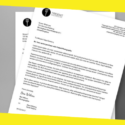Designing a Trade Show Booth For Your Business That Delivers

Trade shows give businesses a special chance to personally interact with industry influencers, partners, and possible consumers. Whether your presentation is promoting a new product, brand reinforcement, or networking for future growth, your booth significantly influences the impression of your business. A well-designed trade show booth doesn’t just grab attention—it makes a lasting impression and converts interest into leads. Plan your setup with consideration for the following five major components to make sure your booth really produces results.
1. Start with Clear Objectives
Clarify what success looks like for your business at the event before you even start drawing concepts or selecting booth components. Are you seeking to create awareness of the brand, promote a new product, or generate leads? Every aim will affect the arrangement, message, and staffing requirements of your booth. If your objective is to produce high-quality leads, for instance, your design should give interaction areas—perhaps with demo stations or semi-private meetings should be a top priority.
2. Invest in Strategic Design and Branding
Your booth represents the home of your brand at the trade show. It should visually appeal to your audience and strategically complement your goals, reflecting your business identity. Use consistent branding elements including your logo, brand colors, and fonts across the booth.
A cohesive experience might result from elements including lighting, backdrop materials, digital displays, and even flooring. For example, trade show booths 10×10 in size may have a small footprint, but with smart design—bold vertical graphics, interactive elements, or well-placed product shelving—it can leave a lasting impact. These compact booth setups are excellent examples of how strategic design can deliver strong results even in limited space.
3. Focus on Attendee Engagement
Without engaging attendees, even the most exquisitely crafted booth will fail. Your industry and target audience will shape how you engage attendees. It may be an interactive touchscreen displaying your product in use, a VR experience, or live staff demos driven by great enthusiasm.
Don’t underestimate how contests, prizes, and other interactive elements can inspire consumers to stop and engage. Make sure your staff is ready to start discussions as much as to respond to questions. Attendees are more likely to remember your company and take action following the event if they actively engage and communicate with you.
4. Plan the Flow and Functionality
A well-designed trade show booth is about how it performs in a packed, dynamic setting, not only about appearance. Take into consideration the path people will take across the space. Is there a logical route that motivates them to halt at important points? Are members of your team visible and easily reachable? Can several persons explore the exhibit without feeling crowded?
Good layout design, even in small spaces like 10×10 booths, may foster openness. Set important messaging or displays at eye level, then make sure interactive stations or product samples are easily reachable. Whether it’s a laid-back couch space or a table with chairs, keep storage places discreet and make sure there’s a clear spot for important chats. Efficient space usage guarantees that your booth functions without problems all during the event and helps to improve interactions.
5. Train Your Team and Prepare Your Materials
The layout of the booth is simply one factor; the people representing your business are as important. Verify that your staff knows the objectives of the event, the booth’s layout, and how best to interact with guests. Give them key talking points, FAQs, and a clear lead capture plan. All of your digital and printed materials should also convey the professionalism of your booth. From business cards and pamphlets to branded goods and lead capture forms, every touchpoint should support your message and enable post-show follow-up. A polished, ready workforce will improve your whole presence and ensure that the potential of the booth is completely realized.
Conclusion
Designing a trade show booth that produces results calls for strategic thought, thorough preparation, and a concentration on meaningful engagement—not only eye-catching visuals. From establishing clear objectives and designing a functioning layout to training your staff and applying adaptable formats, every action counts greatly in converting foot traffic into profitable business opportunities. Done correctly, your booth becomes a potent growth engine rather than simply a presence at the event. Are you prepared to have your next trade show experience go perfectly?
Recommended For You
The Logistics Industry: 5 Trends To Watch
Most Inside
Most Inside offers high-quality recommendations and valuable updates to enhance all aspects of your life, providing premium guidance and enriching experiences.




